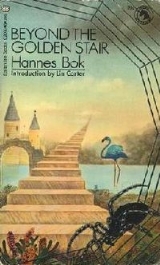Sunday, September 4, 2011
TIME CAPSULES classic book reviews by Bill Lindblad
SCARS by Richard Christian Matheson
There is much being said about Joe Hill these days. He deserves it. He's not the first great horror writer to deal with the shadow of a famous father, though, and the most obvious example is Richard Christian Matheson.
RCM doesn't produce much horror fiction. His output tends toward one story per year, and his stories are often very short. He's primarily a writer of screenplays, and has many movie and television credits. But when he does write fiction it's often brilliant; it is common for him to contribute a short piece to an anthology only to have it repurchased for inclusion in one or more "best of the year" collections.
SCARS is a collection from an earlier, more prolific time of his fiction career. Produced in 1987, it was published in a limited edition from Scream Press and reissued in paperback the next year by Tor. The collection included most of his work from his early pieces in Whispers to stories original to the book. More than 25 stories are presented, and the collection is less than 180 pages in length. That is an average of about seven pages for story. That's all they need. Horror stories are supposed to be disturbing. These are. Good stories are supposed to be memorable. These are. Matheson also works to provide different styles of story; in The Good Always Comes Back, for example, the events could be interpreted quite innocently or with nefarious implications. Vampire is a story told in single word sentences. Cancelled is surreal, Mr. Right is a classic twist ending, and Red is simply a punch in the gut.
This collection isn't merely worth buying. It deserves a place on the shelf of any horror fan.
Five stars out of five.
THE TENANT by Roland Topor
I believe I may be one of ten people on the face of the Earth who loved this book and didn't know that Roman Polanski made a movie out of it.
I'm not a movie guy; that's Jen's department. I'm also not a big fan of Polanski due to his personal issues. Between that pairing of truths, it's not too amazing that I was unaware of the film. T he book, however, is an interesting rarity that can be recommended to anyone who enjoys literate horror.
The original novel was published in France in 1964, and it is very much a product of its time. The protagonist is thrust into a common scenario for a city-dweller: he is about to lose his current apartment, and goes hunting for a new place. He finds one as he's running low on money and luck and moves in despite minor concerns such as the inconvenient distance to the communal toilet, the prior neighbor's suicide and the aggression of the neighbors. The reader is provided simultaneously with a look at the the main character, Telkovsky, and the cities of France in the 1960s.
The book catalogues Trelkovsky's time in the apartment, carefully presenting the reader with each experience which moves him closer to his final moments as a tenant. Events which seem minor, primarily useful for developing character take greater significance as both the protagonist and the reader discover more about the apartment building's inhabitants.
Something is certainly happening, and Topor skillfully allows the reader to determine for themselves how much of the experience is real and how much is merely in the narrator's mind. The result is surreal and haunting, and a book worthy of its gorgeous Millipede Press reissue.
Five stars out of five.
THE BLUE FLAMINGO / BEYOND THE GOLDEN STAIR by Hannes Bok
Originally produced in a heavily edited format in Startling Stories, January 1948 under the title The Blue Flamingo, the novel was published in its full form as part of the Ballantine Adult Fantasy series in 1970.
The story is uneven, both in its characterization and its delivery. The reason for the main character to be involved in the story in the first place is contrived, with one of the other characters fulfilling the role of deus ex machina at the beginning, rather than the end, of the tale. This is inauspicious, to say the least. That said, the story contains many interesting ideas which are fairly well developed and Bok's descriptions of the fantastic are inspired. Bok fails in some ways, such as the love story which is at the center of the narrative or in the suspense which he tries, and generally fails, to infuse throughout the story. Despite his attempts to coax forth fear from the reader there is rarely more than interest. That said, interest is consistently maintained throughout, whether in the original novella or the uncut novel.
It is not a bad novel. It is, in fact, a better than average novel in many ways and great in some. It could be a very enjoyable way to pass some time for a fantasist, or for someone who likes their horror to never have any serious threat to the innocent characters.
Three stars out of five.
--Bill Lindblad


